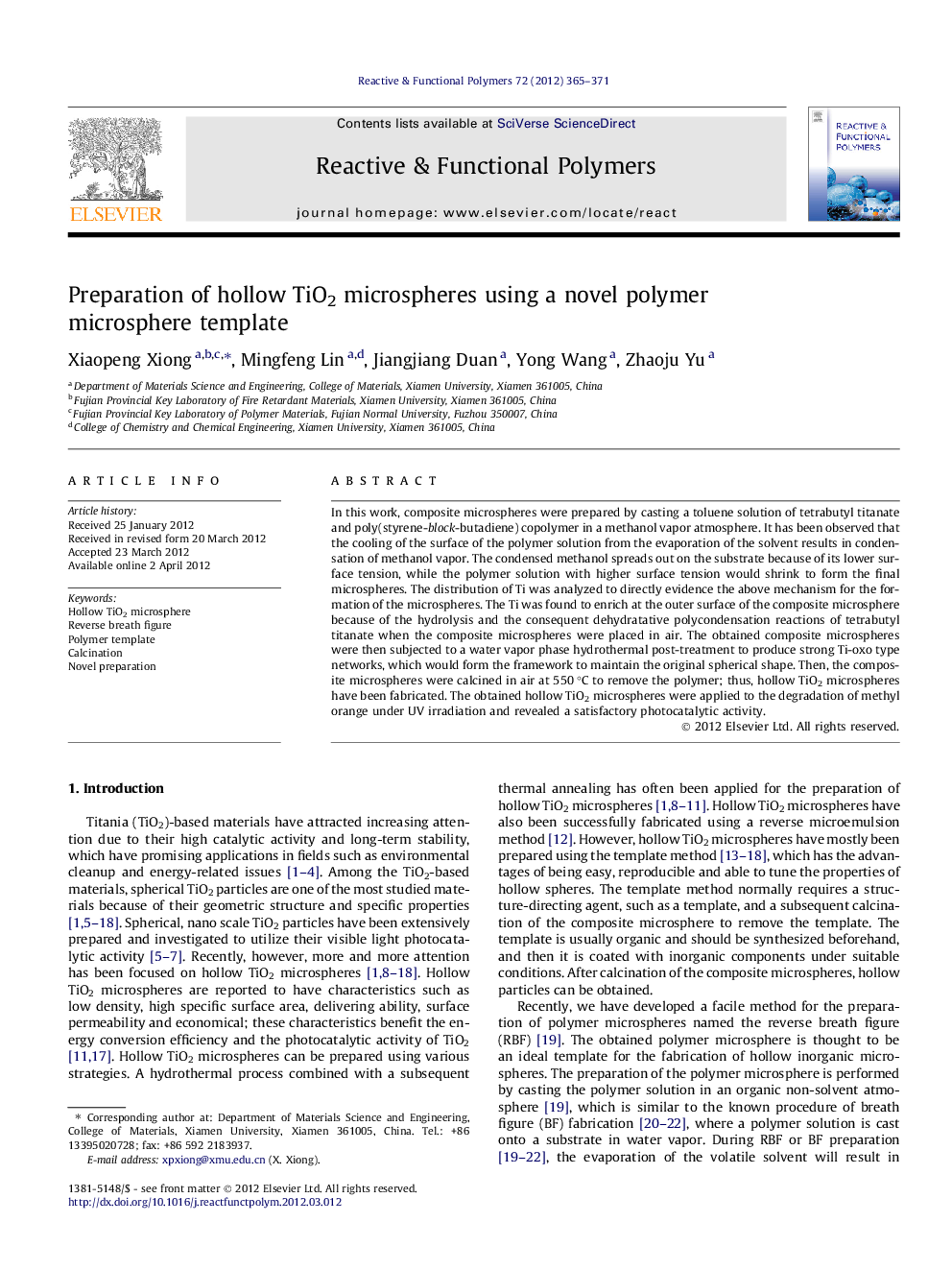| Article ID | Journal | Published Year | Pages | File Type |
|---|---|---|---|---|
| 5210347 | Reactive and Functional Polymers | 2012 | 7 Pages |
Abstract
In this work, composite microspheres were prepared by casting a toluene solution of tetrabutyl titanate and poly(styrene-block-butadiene) copolymer in a methanol vapor atmosphere. It has been observed that the cooling of the surface of the polymer solution from the evaporation of the solvent results in condensation of methanol vapor. The condensed methanol spreads out on the substrate because of its lower surface tension, while the polymer solution with higher surface tension would shrink to form the final microspheres. The distribution of Ti was analyzed to directly evidence the above mechanism for the formation of the microspheres. The Ti was found to enrich at the outer surface of the composite microsphere because of the hydrolysis and the consequent dehydratative polycondensation reactions of tetrabutyl titanate when the composite microspheres were placed in air. The obtained composite microspheres were then subjected to a water vapor phase hydrothermal post-treatment to produce strong Ti-oxo type networks, which would form the framework to maintain the original spherical shape. Then, the composite microspheres were calcined in air at 550 °C to remove the polymer; thus, hollow TiO2 microspheres have been fabricated. The obtained hollow TiO2 microspheres were applied to the degradation of methyl orange under UV irradiation and revealed a satisfactory photocatalytic activity.
Keywords
Related Topics
Physical Sciences and Engineering
Chemistry
Organic Chemistry
Authors
Xiaopeng Xiong, Mingfeng Lin, Jiangjiang Duan, Yong Wang, Zhaoju Yu,
